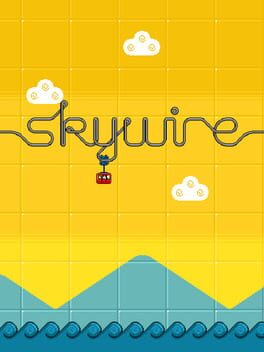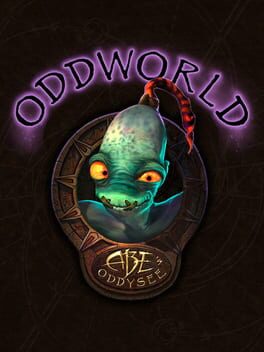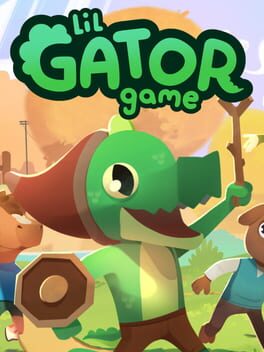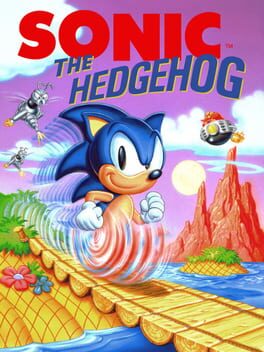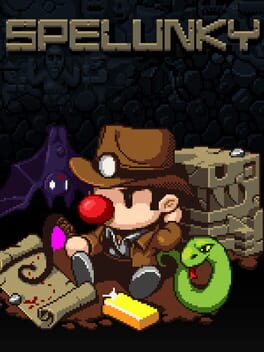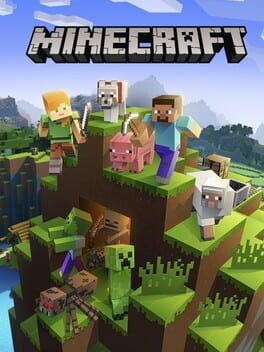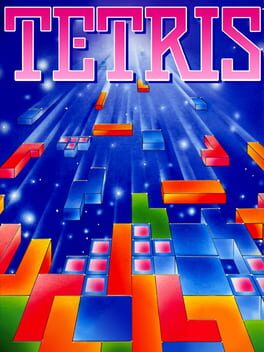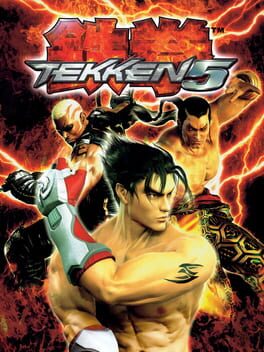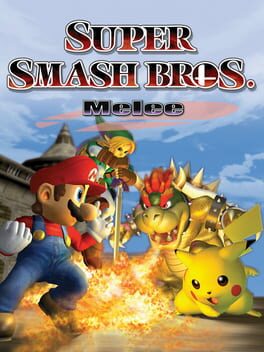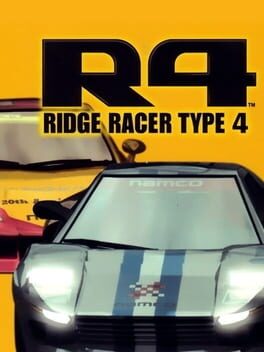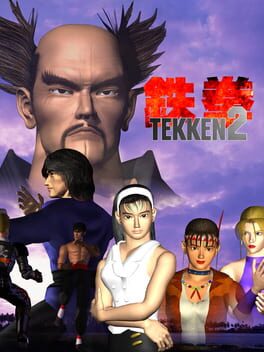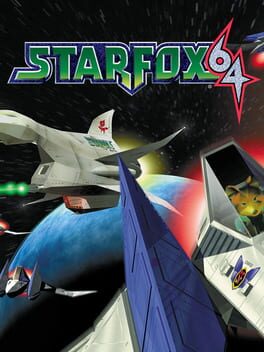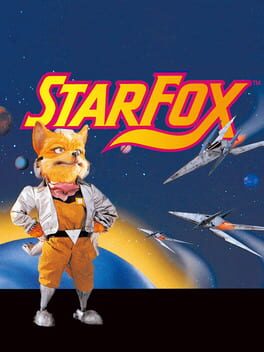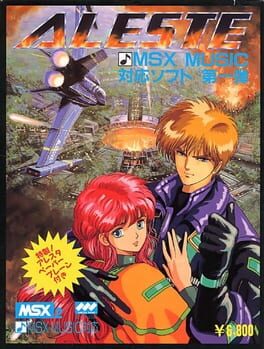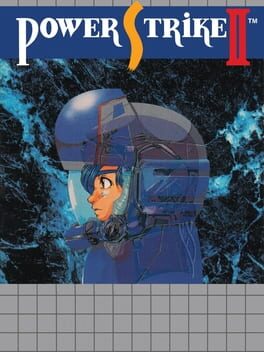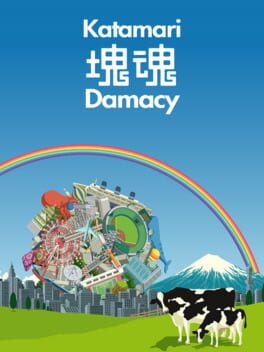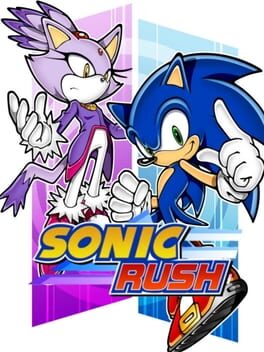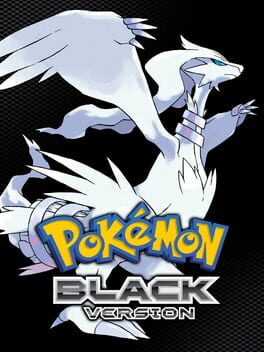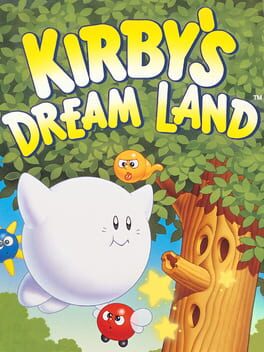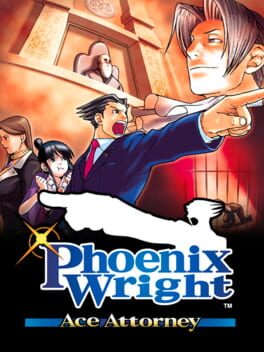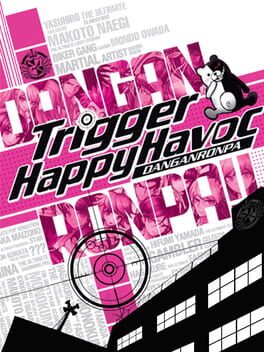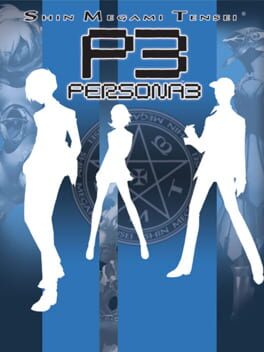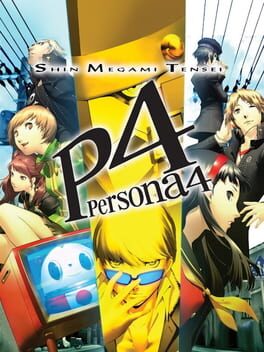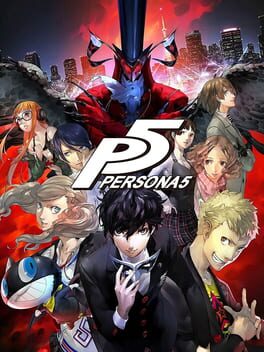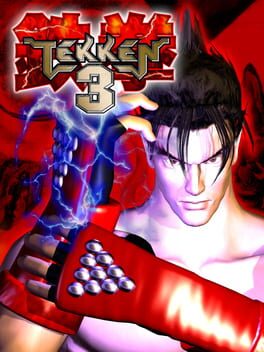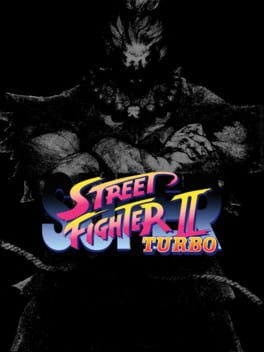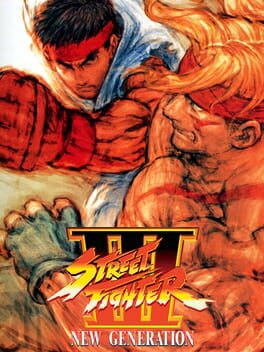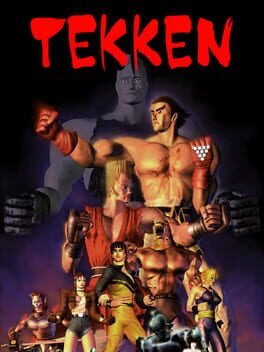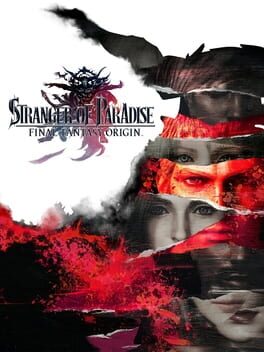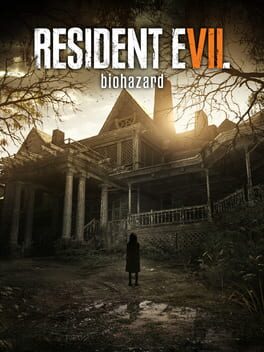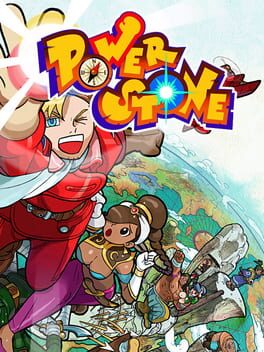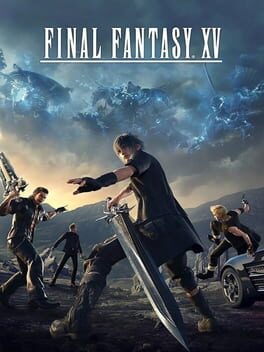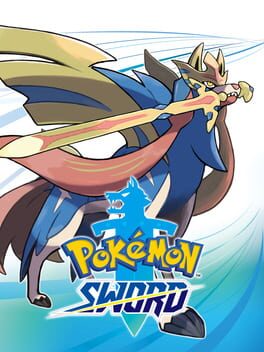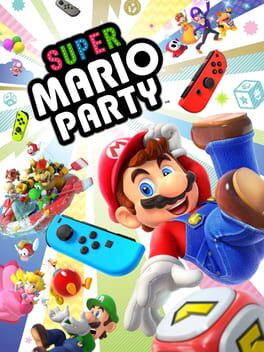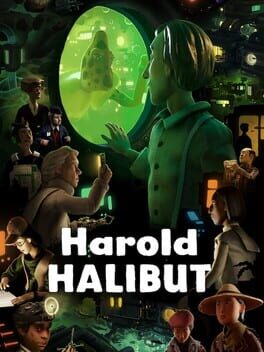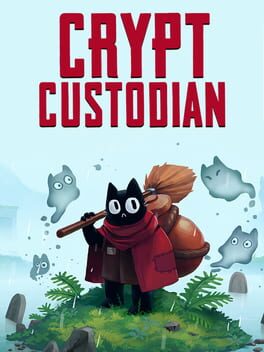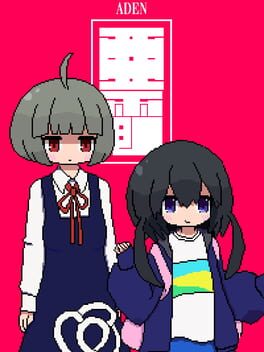tangysphere
BACKER
586 reviews liked by tangysphere
Skywire
2007
Skywire is a game where you use the arrow keys to move a gondola across a linear path, avoiding all the obstacles in your path in hopes of getting at least one of your passengers to the end of the stage. What initially seems like mostly a matter of proper timing soon, however, betrays a fairly complex system revolving around gravity, and how that impacts your momentum: the path curves up or down, the former causing your gondola to move slower, the latter causing you to rocket forward, even if you’re not holding that specific direction. Soon it becomes a matter of controlling your momentum — knowing how long in advance you need to start climbing something, knowing when exactly to start slowing your roll so that you don’t accidentally veer directly into another obstacle, and, sometimes, knowing exactly when you can abuse i-frames to gun it to the end. Its simplicity is complex, and the varying obstacles are mixed and matched in a way Nitrome is clearly adept at at this point. There are… technical issues — obstacles that spawn right on top of you in a way that’ll force you to lose a life unless you explicitly know they’re coming, obstacles with funky hitboxes that at points guarantee you lose a life when the level forces you close up to them — and there are some levels which are, like, three minutes of waiting for obstacles to go through their cycles (which if you mess up sends you right back to the beginning) but as a whole this is definitely the first game I’d consider to be above 'pretty good': just really solid execution where its quibbles don't hold it back as much. Plus! Iconic music! And uploaded to YouTube with decent recording quality this time! Can’t wait to replay the sequel and remember just how it iterates.
Fruitless back-and-forths over Tomb Raider often put me in the same headspace: thinkin' about Oddworld. Now there's a solid cinematic platformer for the PlayStation 1, one with expressive characters, imaginative environments, a great sense of humor and actual messaging to compliment it's fun and often challenging puzzles. Lara can't like, mind control a bear and make it explode. I rest my case.
But opening up my copy of Abe's Oddysee immediately presents something bleakly funny: the definition of a quintology. Oh Lorne. Poor Lorne. They screwed the man at every turn. From pressing the first run of discs with a repeatable, game breaking bug (in Lorne's words, the person who made this call was not "a Gamer"), to Gamestop publishing a guide that immediately funneled new players into the most difficult hidden screens of the game, to his regrets over Exoddus and Sony throwing Soulstorm up on PS+ to die... Like Xenosaga and Shenmue, it doesn't matter if you have a story to tell or the creativity and temerity to do it, the games industry will chew you up and spit you out like some form of tangy meat popsicle. New n' tasty indeed.
Listen to Lorne Lanning talk about Oddworld for any length of time, and it becomes quickly apparent just how passionate and creatively driven he is. Ars Technica's extended War Stories interview is something I throw on at least once a year because I find his background to be fascinating, and his recollections on navigating creative and industrial fields leading to the formation of his studio, Oddworld Inhabitants, provides a considerable amount of insight as to how his worldview - and consequentially, the themes of Oddworld - formed.
Abe's Oddysee was always intended to have a message, and so gameplay was appropriately designed around the particular anxieties and beliefs Lorne wished to express. As funny as it would be to find Abe strapped, you don't shoot guns, something that was a point of contention with staff at Oddworld Inhabitants. Instead, you "shoot words" (and farts) through gamespeak, a mechanic that allows the player to interface on a more personal level with the game than simply pulling a trigger... Though through mind control, you do still do that. Sometimes the creative process demands compromise.
One complaint I would have about this system is that much of your time rescuing Modokons is front and backloaded, with an extremely lengthy middle game chronicling Abe's trials outside of Rupture Farms tucking most Modokon rescues behind hidden screens and portals. To a certain extent, loading the game so full of secrets is good and provides replayability, but I found the puzzles in which you're trying to disarm a hazardous area and lead as many Modokons to safety as possible to be more engaging than the segmented puzzle rooms of Paramonia and Scrabania. Elum, Abe's mount, does fill this role somewhat, but I twice had him despawn requiring me to reload a save and lose progress, so I'm a little upset with him right now.
The end game also gets absolutely brutal, placing checkpoints far and between sequences that require precise timing and manipulation of enemies. Controls are rarely the issue so much as understanding the order of operations to get through the multiple levels of Rupture Farms, but when everything clicks and you execute on a perfect run, it feels good. The end of Abe's Oddysee has some of the most genuinely tense moment-to-moment gameplay on the system, it is agonizing as it is great. Wait, what do you mean I didn't save enough Modokons? Hold on, why am I being teleported back to the start of Rupture Farms, wait--
While the experience of playing Oddysee can at times be a bit uneven and even frustrating, I do think it comes together into something really special. The texture of the pre-rendered environments, the clay-like quality of the character sprites, the ways in which Rupture's oppressive and hostile factory gives way to barren wastelands drained of resources and life all for the sake of capital, and how that is conveyed humorously both through the game's writing and the player's own machinations... it's great. I really like Abe's Oddysee. 3.5 out of 5 smooches on the cheek for Mr. Lanning, but not 5 because Lorne is apparently never allowed to have a quintology of anything. I don't make the rules.
But opening up my copy of Abe's Oddysee immediately presents something bleakly funny: the definition of a quintology. Oh Lorne. Poor Lorne. They screwed the man at every turn. From pressing the first run of discs with a repeatable, game breaking bug (in Lorne's words, the person who made this call was not "a Gamer"), to Gamestop publishing a guide that immediately funneled new players into the most difficult hidden screens of the game, to his regrets over Exoddus and Sony throwing Soulstorm up on PS+ to die... Like Xenosaga and Shenmue, it doesn't matter if you have a story to tell or the creativity and temerity to do it, the games industry will chew you up and spit you out like some form of tangy meat popsicle. New n' tasty indeed.
Listen to Lorne Lanning talk about Oddworld for any length of time, and it becomes quickly apparent just how passionate and creatively driven he is. Ars Technica's extended War Stories interview is something I throw on at least once a year because I find his background to be fascinating, and his recollections on navigating creative and industrial fields leading to the formation of his studio, Oddworld Inhabitants, provides a considerable amount of insight as to how his worldview - and consequentially, the themes of Oddworld - formed.
Abe's Oddysee was always intended to have a message, and so gameplay was appropriately designed around the particular anxieties and beliefs Lorne wished to express. As funny as it would be to find Abe strapped, you don't shoot guns, something that was a point of contention with staff at Oddworld Inhabitants. Instead, you "shoot words" (and farts) through gamespeak, a mechanic that allows the player to interface on a more personal level with the game than simply pulling a trigger... Though through mind control, you do still do that. Sometimes the creative process demands compromise.
One complaint I would have about this system is that much of your time rescuing Modokons is front and backloaded, with an extremely lengthy middle game chronicling Abe's trials outside of Rupture Farms tucking most Modokon rescues behind hidden screens and portals. To a certain extent, loading the game so full of secrets is good and provides replayability, but I found the puzzles in which you're trying to disarm a hazardous area and lead as many Modokons to safety as possible to be more engaging than the segmented puzzle rooms of Paramonia and Scrabania. Elum, Abe's mount, does fill this role somewhat, but I twice had him despawn requiring me to reload a save and lose progress, so I'm a little upset with him right now.
The end game also gets absolutely brutal, placing checkpoints far and between sequences that require precise timing and manipulation of enemies. Controls are rarely the issue so much as understanding the order of operations to get through the multiple levels of Rupture Farms, but when everything clicks and you execute on a perfect run, it feels good. The end of Abe's Oddysee has some of the most genuinely tense moment-to-moment gameplay on the system, it is agonizing as it is great. Wait, what do you mean I didn't save enough Modokons? Hold on, why am I being teleported back to the start of Rupture Farms, wait--
While the experience of playing Oddysee can at times be a bit uneven and even frustrating, I do think it comes together into something really special. The texture of the pre-rendered environments, the clay-like quality of the character sprites, the ways in which Rupture's oppressive and hostile factory gives way to barren wastelands drained of resources and life all for the sake of capital, and how that is conveyed humorously both through the game's writing and the player's own machinations... it's great. I really like Abe's Oddysee. 3.5 out of 5 smooches on the cheek for Mr. Lanning, but not 5 because Lorne is apparently never allowed to have a quintology of anything. I don't make the rules.
Alan Wake
2010
Shout out to small rural towns overtaken by an evil or dark presence that corrupts them or brings hellish creatures. Gotta be one of my favorite genders.
Deemon, the incompetent reviewer, started off his write-off with one of his usual jokes, so unfunny that one might wonder if he was doing it on purpose or if he really has such poor comedy taste. He was trying to hide the fact that he really didn’t know where to start; the path to take might seem clear, but like the streets and forest of Bright Falls, it’s more deceiving than it may look at first, like a maze that’s also a downward spiral.
Deemon pondered, searching for a way to salvage the review, desperately trying to find out which step he should take, what words he should use. He sighed. He decided to let the words write themselves, to let out all the thoughts that had formed while the darkness and light of the town surrounded Alan Wake. He surrendered himself to the unknown, one that might be already written after all… Though he knows he had to talk about the music for sure, that selection of bangers had to be celebrated somehow.
Ambition almost killed Alan Wake, in more ways than one. I mean, I may not know much about Remedy Studios, in fact, it is the very first game of theirs I have ever played and beaten, but I do know the story of Bright Falls and how it was initially going to be something else, an open world of sorts, something that didn’t quite work, as it seems. Translating an already crafted open world into a linear style of game is such a monumental task that if I were in that predicament, I’d have considered outright scrapping everything and starting from zero, but that probably wasn’t even a realistic option for the team to begin with.
But that’s not even what I’m specifically referring to. Alan Wake, the game, the package, the copy made out of code and specific sections, is riddled with hiccups and bumps; it’s filled with padding, sections of trees and mist than don’t offer much aside from one or two manuscripts pages and combat sections that can feel overbearing at times, the remnants of its troubled production remain in aspects such as the barren areas and driving sections that don’t have much of a place and are so frustrating to playthrough even if you ignore any cars I just wish they were taken out —tho it’s kind of cute how it also uses the same light mechanic as the rest of the game—, the encounters with the Taken or the groups of mad crows often lack imagination and enemy variety or don’t jam very well with how the camera works in the case of the camera, and at one point I just kept thinking how much the experience would have benefited if some sections were repurposed in different ways or outright removed.
The imperfections of Alan Wake mostly come from this, factors outside of the game itself, of its story, but they still impact it negatively; I can’t scratch off the feeling of something being lost a bit when all of the boss enemies behave the exact same, the only thing that changes being the creepy lines they spat out and the character model. If the game wasn’t anything more than a series of levels where you shoot at things, then these issues would have rotted its pages…
…luckily, it has a dragon.
Wouldn’t it be funny if I started to praise the actual combat itself after spending two paragraphs criticizing some gameplay sections? Yeah, it would be hilarious! ... ANYWAYyeah I fucking adore the way Al controls. It occupies that same space as Simon from Castlevania, where how slow and imprecise it feels actually benefits the gameplay. You truly get the feeling Alan has never picked a gun in his life in any major capacity; he’s slow, clunky, imprecise, and I wouldn’t want it any other way. The tense dance of using light to weaken the Taken and gen emptying the chambers of them, or hell, simply using a flare and trying to activate the closest generator, it’s a super straight-forward system, and I love it. It’s incredibly satisfying to come out of encounters on top, because even if there isn’t much scarcity in resources (even if you start off each chapter with nothing each time), they are still somewhat limited, especially the most powerful weapons, and little things like mashing X to reload faster or the camera panning out to warn you of nearby enemies are things I didn’t know I needed until now.
It would be a far cry to call it a survival horror, but it’s tense; it’s tense to try to manage the purge while a bulldozer is charging full speed at you; it’s tense to try to outspeed a force you cannot do nothing against; and Alan gets progressively more and more tired. I can make the argument that there should be less of it or at least more variety in what it offers enemy-wise, but nothing will take away from the fact that the core itself is some fantastic shit.
Like… there’s something about fighting against waves of enemies on stage while the sickest rock tune ever plays in the background and the lights and flames fill your eyes that I can only call ‘’fucking awesome’’.
Deemon knew that wasn’t just it. He could talk about flaws and shooting Taken all he wanted, but something else lied within the light. He ran into it.
‘’But there’s something else’’, he said
But there’s something else.
A story already written, touched by the darkness. Written already as a part of it before birth, its muse trying to corrupt it. An ending yet to be typed out.
I have never seen a videogame story that trusts so much that the player will be intrigued enough by it to stick with it and engage with it all the way through. The tale Alan Wake, Alice, Barry, Sarah, and the whole town get tangled into is not intriguing; it is fascinating. I have never felt such closure from getting answers to questions I never realized where there in the first place. From being pretty disappointed about how Nightingale and Mott had such a poor presence as antagonists to being in awe of how their actions fell into place after the truth of this unfortunate series of events was revealed. Alan Wake offers a hell of a mystery. Alan Wake solves it.
The pages of the manuscript are as essential as the cinematics and interactions, so many pieces of the puzzle fit, it’s almost like getting spoiled before something happens, which in a way is exactly what’s happening. At first, I felt pretty disappointed that this would be a jarring light vs darkness story mixed with a thriller. Then it ended up being a meta-narrative within its own meta-narrative. The fact they did that without it feeling overcomplicated or screwing it up is ovation worthy.
But I also feel a huge sense of admiration for the micro-stories at play; hearing and talking to the inhabitants of Bright Falls, listening to Maine’s night radio, the echoes of the Taken and stellar ambience sounds ringing through my ears, the fucking incredible Night Springs shorts that had me HOOKED... It was the little things scattered in the trees and buildings and the small talk that gave this spiraling world even more meaning.
It ends with the darkness hungry for more, just like me. I’ve seen people call Alan Wake ‘’the most 6/7 out of ten game I’ve ever played’’, and even though I do not sympathize with that statement at all because it feels reductive in any context, I kind of get what people mean by it. Alan Wake is profoundly flawed, but most of them do not come from the game itself, but rather from the complicated production it had to go through. In the face of such adversity, I’ve never seen such confidence, such talent, or such a desire to tell a tale like this. Alan Wake isn’t just *a* story, there’s more to be written and read, but at the end of the day, it’s also its own story. And what a story it is.
Maybe this isn’t what the champion of light could have been if the circumstances were different, but the hardships cannot be avoided, and even after going through them, they really sold me on this novel.
Deemon, the incompetent reviewer, started off his write-off with one of his usual jokes, so unfunny that one might wonder if he was doing it on purpose or if he really has such poor comedy taste. He was trying to hide the fact that he really didn’t know where to start; the path to take might seem clear, but like the streets and forest of Bright Falls, it’s more deceiving than it may look at first, like a maze that’s also a downward spiral.
Deemon pondered, searching for a way to salvage the review, desperately trying to find out which step he should take, what words he should use. He sighed. He decided to let the words write themselves, to let out all the thoughts that had formed while the darkness and light of the town surrounded Alan Wake. He surrendered himself to the unknown, one that might be already written after all… Though he knows he had to talk about the music for sure, that selection of bangers had to be celebrated somehow.
Ambition almost killed Alan Wake, in more ways than one. I mean, I may not know much about Remedy Studios, in fact, it is the very first game of theirs I have ever played and beaten, but I do know the story of Bright Falls and how it was initially going to be something else, an open world of sorts, something that didn’t quite work, as it seems. Translating an already crafted open world into a linear style of game is such a monumental task that if I were in that predicament, I’d have considered outright scrapping everything and starting from zero, but that probably wasn’t even a realistic option for the team to begin with.
But that’s not even what I’m specifically referring to. Alan Wake, the game, the package, the copy made out of code and specific sections, is riddled with hiccups and bumps; it’s filled with padding, sections of trees and mist than don’t offer much aside from one or two manuscripts pages and combat sections that can feel overbearing at times, the remnants of its troubled production remain in aspects such as the barren areas and driving sections that don’t have much of a place and are so frustrating to playthrough even if you ignore any cars I just wish they were taken out —tho it’s kind of cute how it also uses the same light mechanic as the rest of the game—, the encounters with the Taken or the groups of mad crows often lack imagination and enemy variety or don’t jam very well with how the camera works in the case of the camera, and at one point I just kept thinking how much the experience would have benefited if some sections were repurposed in different ways or outright removed.
The imperfections of Alan Wake mostly come from this, factors outside of the game itself, of its story, but they still impact it negatively; I can’t scratch off the feeling of something being lost a bit when all of the boss enemies behave the exact same, the only thing that changes being the creepy lines they spat out and the character model. If the game wasn’t anything more than a series of levels where you shoot at things, then these issues would have rotted its pages…
…luckily, it has a dragon.
Wouldn’t it be funny if I started to praise the actual combat itself after spending two paragraphs criticizing some gameplay sections? Yeah, it would be hilarious! ... ANYWAYyeah I fucking adore the way Al controls. It occupies that same space as Simon from Castlevania, where how slow and imprecise it feels actually benefits the gameplay. You truly get the feeling Alan has never picked a gun in his life in any major capacity; he’s slow, clunky, imprecise, and I wouldn’t want it any other way. The tense dance of using light to weaken the Taken and gen emptying the chambers of them, or hell, simply using a flare and trying to activate the closest generator, it’s a super straight-forward system, and I love it. It’s incredibly satisfying to come out of encounters on top, because even if there isn’t much scarcity in resources (even if you start off each chapter with nothing each time), they are still somewhat limited, especially the most powerful weapons, and little things like mashing X to reload faster or the camera panning out to warn you of nearby enemies are things I didn’t know I needed until now.
It would be a far cry to call it a survival horror, but it’s tense; it’s tense to try to manage the purge while a bulldozer is charging full speed at you; it’s tense to try to outspeed a force you cannot do nothing against; and Alan gets progressively more and more tired. I can make the argument that there should be less of it or at least more variety in what it offers enemy-wise, but nothing will take away from the fact that the core itself is some fantastic shit.
Like… there’s something about fighting against waves of enemies on stage while the sickest rock tune ever plays in the background and the lights and flames fill your eyes that I can only call ‘’fucking awesome’’.
Deemon knew that wasn’t just it. He could talk about flaws and shooting Taken all he wanted, but something else lied within the light. He ran into it.
‘’But there’s something else’’, he said
But there’s something else.
A story already written, touched by the darkness. Written already as a part of it before birth, its muse trying to corrupt it. An ending yet to be typed out.
I have never seen a videogame story that trusts so much that the player will be intrigued enough by it to stick with it and engage with it all the way through. The tale Alan Wake, Alice, Barry, Sarah, and the whole town get tangled into is not intriguing; it is fascinating. I have never felt such closure from getting answers to questions I never realized where there in the first place. From being pretty disappointed about how Nightingale and Mott had such a poor presence as antagonists to being in awe of how their actions fell into place after the truth of this unfortunate series of events was revealed. Alan Wake offers a hell of a mystery. Alan Wake solves it.
The pages of the manuscript are as essential as the cinematics and interactions, so many pieces of the puzzle fit, it’s almost like getting spoiled before something happens, which in a way is exactly what’s happening. At first, I felt pretty disappointed that this would be a jarring light vs darkness story mixed with a thriller. Then it ended up being a meta-narrative within its own meta-narrative. The fact they did that without it feeling overcomplicated or screwing it up is ovation worthy.
But I also feel a huge sense of admiration for the micro-stories at play; hearing and talking to the inhabitants of Bright Falls, listening to Maine’s night radio, the echoes of the Taken and stellar ambience sounds ringing through my ears, the fucking incredible Night Springs shorts that had me HOOKED... It was the little things scattered in the trees and buildings and the small talk that gave this spiraling world even more meaning.
It ends with the darkness hungry for more, just like me. I’ve seen people call Alan Wake ‘’the most 6/7 out of ten game I’ve ever played’’, and even though I do not sympathize with that statement at all because it feels reductive in any context, I kind of get what people mean by it. Alan Wake is profoundly flawed, but most of them do not come from the game itself, but rather from the complicated production it had to go through. In the face of such adversity, I’ve never seen such confidence, such talent, or such a desire to tell a tale like this. Alan Wake isn’t just *a* story, there’s more to be written and read, but at the end of the day, it’s also its own story. And what a story it is.
Maybe this isn’t what the champion of light could have been if the circumstances were different, but the hardships cannot be avoided, and even after going through them, they really sold me on this novel.
Lil Gator Game
2022
A Short Hike meets Breath of the Wild resulting in a quirky, wholesome little package that I loved every second of.
Lil Gator Game isn't just another "BOTW-inspired game" it is inspired by Zelda on a meta level that fits and is crucial to the actual story of the game. You are playing a lil gator who literally grows up playing Zelda pretend with his sister, and now you're putting on the biggest pretend Zelda game all over the island - exploring, completing little quests, battling cardboard foes. It's cute, short, and sweet. More games like this please.
My only complaint is that, while exploration is the point of the game, without a map, quest log, or quest markers, it was a little too easy to lose your bearings on the island and have trouble finding your way to the next quest.
+ Delightfully wholesome
+ Touching little story
+ Love letter to Zelda fans
+ Feels surprisingly really good to play
- Occasionally difficult to find where you need to go
Lil Gator Game isn't just another "BOTW-inspired game" it is inspired by Zelda on a meta level that fits and is crucial to the actual story of the game. You are playing a lil gator who literally grows up playing Zelda pretend with his sister, and now you're putting on the biggest pretend Zelda game all over the island - exploring, completing little quests, battling cardboard foes. It's cute, short, and sweet. More games like this please.
My only complaint is that, while exploration is the point of the game, without a map, quest log, or quest markers, it was a little too easy to lose your bearings on the island and have trouble finding your way to the next quest.
+ Delightfully wholesome
+ Touching little story
+ Love letter to Zelda fans
+ Feels surprisingly really good to play
- Occasionally difficult to find where you need to go
Lil Gator Game
2022
Lil Gator Game reminds me a lot of A Short Hike in the same way that Haven Park does, but unlike Haven Park, it's much easier to maintain a free-spirited flow state in a way that the former really captured and the latter somewhat lacked, lending Lil Gator Game a much stronger sense of identity. Translating the climbing stamina mechanics from the isometric perspective of A Short Hike to the 3rd person 3D perspective of Lil Gator Game (basically that of Breath of the Wild) does wonders for how quickly you can just jump and climb about. Factor in t-shirt gliding, "shield" sledding (which allows you to skim on the water like a jetski), and the ability to chain all of this together through constant jumps while sledding to build up speed, and you've got some pretty sick movement potential, even if you don't necessarily need it.
I think that's the strength that this game best exemplifies; there's tons of ways to get going and zip around the two islands for the kicks, but you can absolutely take the odyssey at your own pace and just soak in your surroundings too, since there's no fail-state from falling too far or discomfort from ever getting lost. It's a several hour nostalgia trip with tons of environmental interactivity that's quite literally a living make-believe playground, with tons of random hats, swords, shields, and various toys like a bubble gum balloon or a sticky hand to roleplay Spider Gator to mess around with on a whim. They even give you a texting tool to find the remaining cardboard monsters to go slashy slashy upon and the megaphone to shout out to find your remaining buddies if you're that kind of individual that wants to do everything there is to see. It never tries to take itself too seriously either; the whole gang's here for the dumb adventure tropes and genuinely wants to be your friend. It's such a simple yet realized take upon an indie classic, but absolutely worthwhile dipping into just to remember that sometimes, it's okay to forget about life for a while and pretend to be a kid again.
Oh, and the Ninja Headband accessory actually does make your character move faster thanks to the Naruto run. It's okay though; no one's going to judge you in Lil Gator Game. Now, time to climb some more peaks and ragdoll terminal velocity splat one more time before dinner.
I think that's the strength that this game best exemplifies; there's tons of ways to get going and zip around the two islands for the kicks, but you can absolutely take the odyssey at your own pace and just soak in your surroundings too, since there's no fail-state from falling too far or discomfort from ever getting lost. It's a several hour nostalgia trip with tons of environmental interactivity that's quite literally a living make-believe playground, with tons of random hats, swords, shields, and various toys like a bubble gum balloon or a sticky hand to roleplay Spider Gator to mess around with on a whim. They even give you a texting tool to find the remaining cardboard monsters to go slashy slashy upon and the megaphone to shout out to find your remaining buddies if you're that kind of individual that wants to do everything there is to see. It never tries to take itself too seriously either; the whole gang's here for the dumb adventure tropes and genuinely wants to be your friend. It's such a simple yet realized take upon an indie classic, but absolutely worthwhile dipping into just to remember that sometimes, it's okay to forget about life for a while and pretend to be a kid again.
Oh, and the Ninja Headband accessory actually does make your character move faster thanks to the Naruto run. It's okay though; no one's going to judge you in Lil Gator Game. Now, time to climb some more peaks and ragdoll terminal velocity splat one more time before dinner.
Doronko Wanko
2024
While in the middle of my Cult of the Lamb playthrough, my power went out for 4 hours. In that time, I had nothing to do except go on my phone but eventually it died. I remembered my 3DS was fully charged and so I decided to look through my DS/3DS games to see if I can be productive and replay something I hadn't in a while. Decided on the original New Super Mario Bros, since I hadn't played the series in years. After playing through the first world, my power came back on not long after. Decided to continue replaying this even with the power back on so here we are.
The New Super Mario Bros games were not games I ever truly loved. Yes, by the time 2 and U came out, the series became super stale. But even with DS and Wii, I never found them amazing at all. Replaying DS, this seems to still be true for me. In fact, this may be my least favorite of the bunch, at least next to 2 for several different reasons. Even despite that however, it's still a fun time overall and worth coming back to for a certain addition I'll talk about later.
First thing you'll notice when playing the game, would be its graphics. Personally, I always thought the NSMB games had a fine enough artstyle tho I much prefer how the sprite-based games looked in the past. DS though is sadly the ugliest in the series now. It was certainly a marvel back then but nowadays, just looks kinda ugly a lot of the time compared to the other titles.
Level design-wise, the game has plenty of levels that actually are pretty memorable. The sewers level, the giant wiggler level, the pipe maze level, the fucking brutal 8-1 level with the birds. I wish more of the levels were memorable like these, since a large chunk can be forgettable but I was surprised just how many I ended up remembering. This game also added the star coin collectable and honestly, they can be a tremendous pain in this game. They don't hide them behind invisible walls like future game but some of them require a powerup from other levels or toad houses and it can be frustrating. Same with the secret exits (which came back from Mario World). Like a third of those require the aforementioned outside powerup and they're a pain. I do recommend going for 100% tho cuz once you beat the game, you can actually buy bottom screen skins with any star coins you have and I never knew this and it's awesome. Such a great reward for going out of your way to get them.
One more aspect of the gameplay I wanted to get into were the powerups. 80% of the game you'll be seeing the fire flower which is a good powerup of course. The other 20%, you'll see the three new ones (and the classic star I guess) and I gotta say they're not that great. The mega mushroom is a great concept and is fun to use but is barely in any levels naturally. The mini mushroom is also not used that much and I honestly never liked much just because it's so floaty. And the shell is just obnoxious since you start moving on your own the moment you hit top speed and you have to manually stop to get out of your shell. I'm sure it's super fun when speed running but alas, it just annoyed me more than anything. This is another thing I think future games did better, especially WIi, that one has a great selection of powerups.
I really don't have much to say about the soundtrack. It's alright at best I think and it doesn't help the 1-1 theme gets reused in Wii. I did actually like the map theme for world 7 though, something about that feels so nostalgic. This game is somewhat nostalgic to me since I remember seeing a classmate play this on field trip bus ride when I was 8 and thinking it looked so cool. Never ended up playing the main campaign until after I played the other 3 NSMB games but my memory of that bus ride is engrained in my memory, and part of me thinks that classmate was on world 7 that day which might explain why the song feels so nostalgic. Either way, besides that one song I really like, never cared for the game's ost sadly.
This is all fine and dandy, but the real reason I think someone should come back to this one is its multiplayer modes. Minigames are a blast to play, even if most of them are ported straight from 64 DS, but there are a couple new ones which is nice. I probably played these more than the actual game back in the day. The Mario vs Luigi mode was also a lot of fun back in the day too. The goal was to get the most stars and you could steal them from the opposite Mario brother. Was just really fun constantly screwing the other person over. Though I guess since (most of) the minigames are in 64 DS and future games had multiplayer in it's campaigns, these aren't amazing reasons to come back to NSMB DS specifically, but it's still a nice little package of multiplayer goodness overall.
Like I said, was never a huge fan of the New Super Mario Bros games, and while this still rings true...I'd say this was still a fun time overall. Would be fun to replay them all but I'd have to spread them out considering how samey they are lol.
The New Super Mario Bros games were not games I ever truly loved. Yes, by the time 2 and U came out, the series became super stale. But even with DS and Wii, I never found them amazing at all. Replaying DS, this seems to still be true for me. In fact, this may be my least favorite of the bunch, at least next to 2 for several different reasons. Even despite that however, it's still a fun time overall and worth coming back to for a certain addition I'll talk about later.
First thing you'll notice when playing the game, would be its graphics. Personally, I always thought the NSMB games had a fine enough artstyle tho I much prefer how the sprite-based games looked in the past. DS though is sadly the ugliest in the series now. It was certainly a marvel back then but nowadays, just looks kinda ugly a lot of the time compared to the other titles.
Level design-wise, the game has plenty of levels that actually are pretty memorable. The sewers level, the giant wiggler level, the pipe maze level, the fucking brutal 8-1 level with the birds. I wish more of the levels were memorable like these, since a large chunk can be forgettable but I was surprised just how many I ended up remembering. This game also added the star coin collectable and honestly, they can be a tremendous pain in this game. They don't hide them behind invisible walls like future game but some of them require a powerup from other levels or toad houses and it can be frustrating. Same with the secret exits (which came back from Mario World). Like a third of those require the aforementioned outside powerup and they're a pain. I do recommend going for 100% tho cuz once you beat the game, you can actually buy bottom screen skins with any star coins you have and I never knew this and it's awesome. Such a great reward for going out of your way to get them.
One more aspect of the gameplay I wanted to get into were the powerups. 80% of the game you'll be seeing the fire flower which is a good powerup of course. The other 20%, you'll see the three new ones (and the classic star I guess) and I gotta say they're not that great. The mega mushroom is a great concept and is fun to use but is barely in any levels naturally. The mini mushroom is also not used that much and I honestly never liked much just because it's so floaty. And the shell is just obnoxious since you start moving on your own the moment you hit top speed and you have to manually stop to get out of your shell. I'm sure it's super fun when speed running but alas, it just annoyed me more than anything. This is another thing I think future games did better, especially WIi, that one has a great selection of powerups.
I really don't have much to say about the soundtrack. It's alright at best I think and it doesn't help the 1-1 theme gets reused in Wii. I did actually like the map theme for world 7 though, something about that feels so nostalgic. This game is somewhat nostalgic to me since I remember seeing a classmate play this on field trip bus ride when I was 8 and thinking it looked so cool. Never ended up playing the main campaign until after I played the other 3 NSMB games but my memory of that bus ride is engrained in my memory, and part of me thinks that classmate was on world 7 that day which might explain why the song feels so nostalgic. Either way, besides that one song I really like, never cared for the game's ost sadly.
This is all fine and dandy, but the real reason I think someone should come back to this one is its multiplayer modes. Minigames are a blast to play, even if most of them are ported straight from 64 DS, but there are a couple new ones which is nice. I probably played these more than the actual game back in the day. The Mario vs Luigi mode was also a lot of fun back in the day too. The goal was to get the most stars and you could steal them from the opposite Mario brother. Was just really fun constantly screwing the other person over. Though I guess since (most of) the minigames are in 64 DS and future games had multiplayer in it's campaigns, these aren't amazing reasons to come back to NSMB DS specifically, but it's still a nice little package of multiplayer goodness overall.
Like I said, was never a huge fan of the New Super Mario Bros games, and while this still rings true...I'd say this was still a fun time overall. Would be fun to replay them all but I'd have to spread them out considering how samey they are lol.
Ridge Racer V
2000
Went petrol go-karting yesterday and managed to hit a few pretty solid drifts on a hairpin by applying the exact principles learned in games like OutRun 2 and Type 4, which felt very, very sweet. (I also gave myself pretty severe whiplash by spinning out on a downhill, but we'll ignore that) Having never so much as attempted a handbrake turn in all my fifteen years of holding a driving licence, finally getting to experience the rush of throwing my backside out caused me to zoom home, exorcise my disc and compare notes with the virtual worlds that taught me all I know about how to drive good (and bad).
Glad I've persevered with this one - I wanted to give it up early on, but the volume of comments suggesting that this was a beautiful gourmet lobster that needs to be cracked open in order to access its meaty innards is a positive example of how reading Backloggd opinions can enrich your gaming life. As everyone says, it is brutal in its opening hours, with punishing S-corners and AI drivers that work so hard to block your every opening to no real detriment of their own. Worth it, though, when you get a handle on how the handling here subtly differs from Type 4: the beginner car is more beginner-friendly than it first seems, essentially allowing you to "correct" a turn you've already started accelerating into in order to turn it into a drift, even when the corner's almost done - a life-saver, especially when your rival has plans for how to run you off the road. The other cars aren't so easily mastered, though, and the rest is up to you - trying to explain their mechanical ins and outs would be like describing how to ride a bike, essentially useless in comparison to just feeling it out for yourself.
Seven tracks (half of which intersect with each other) seems like hardly any at all, but when multiplied with the number of cars on offer and how wildly they differ, you realise you're essentially being offered a series of puzzles that involve working out when each car should turn or shift through gear - a smart game designer's way of maximising value from what was very likely a limited development time. The heroic, master, etc. GPs are less refined measures of improving the game's longevity by just bumping pure numbers up, but are nonetheless welcome because they let you go insanely fast with no real additional risk. Does drafting belong in Ridge Racer? Sound off in the comments below.
Outside of relatively minor mechanical quibbles and course semantics, all that really divides most Ridge Racer games is their vibes. In this regard, I feel like *V lags a few seconds behind 4. I get it - the potential of a new millennium is far more alluring than actually living in it, and there was no way a PlayStation 2 launch title could compare to a generational capstone... but the aesthetic sensibilities here don't feel as confident or coherent. Type 4's soundtrack plays out like a cohesive album by a single artist, whereas V is more like a compilation CD of electric dance tracks with no specific theme, a gamble of tone that doesn't always pay off. I hit [RANDOM PLAY] in Type 4 and I'll always be happy; in V, certain tracks have me considering whether it's worth just hitting the crash barrier and starting again - that's no good! Relationally, this is in many ways the Tekken 4 to Type 4's Tekken 3. Despite all that, this is, of course, you know it, still leagues and miles better than the vibeless drudgery of Gran Turismo*, which I also played yesterday. You WILL have a good time here, if you stick with it. Guaranteed!
Glad I've persevered with this one - I wanted to give it up early on, but the volume of comments suggesting that this was a beautiful gourmet lobster that needs to be cracked open in order to access its meaty innards is a positive example of how reading Backloggd opinions can enrich your gaming life. As everyone says, it is brutal in its opening hours, with punishing S-corners and AI drivers that work so hard to block your every opening to no real detriment of their own. Worth it, though, when you get a handle on how the handling here subtly differs from Type 4: the beginner car is more beginner-friendly than it first seems, essentially allowing you to "correct" a turn you've already started accelerating into in order to turn it into a drift, even when the corner's almost done - a life-saver, especially when your rival has plans for how to run you off the road. The other cars aren't so easily mastered, though, and the rest is up to you - trying to explain their mechanical ins and outs would be like describing how to ride a bike, essentially useless in comparison to just feeling it out for yourself.
Seven tracks (half of which intersect with each other) seems like hardly any at all, but when multiplied with the number of cars on offer and how wildly they differ, you realise you're essentially being offered a series of puzzles that involve working out when each car should turn or shift through gear - a smart game designer's way of maximising value from what was very likely a limited development time. The heroic, master, etc. GPs are less refined measures of improving the game's longevity by just bumping pure numbers up, but are nonetheless welcome because they let you go insanely fast with no real additional risk. Does drafting belong in Ridge Racer? Sound off in the comments below.
Outside of relatively minor mechanical quibbles and course semantics, all that really divides most Ridge Racer games is their vibes. In this regard, I feel like *V lags a few seconds behind 4. I get it - the potential of a new millennium is far more alluring than actually living in it, and there was no way a PlayStation 2 launch title could compare to a generational capstone... but the aesthetic sensibilities here don't feel as confident or coherent. Type 4's soundtrack plays out like a cohesive album by a single artist, whereas V is more like a compilation CD of electric dance tracks with no specific theme, a gamble of tone that doesn't always pay off. I hit [RANDOM PLAY] in Type 4 and I'll always be happy; in V, certain tracks have me considering whether it's worth just hitting the crash barrier and starting again - that's no good! Relationally, this is in many ways the Tekken 4 to Type 4's Tekken 3. Despite all that, this is, of course, you know it, still leagues and miles better than the vibeless drudgery of Gran Turismo*, which I also played yesterday. You WILL have a good time here, if you stick with it. Guaranteed!
Half-Life
1998
I love Half-Life 1, but up until this week I had never actually seen it through to the end. Am I a Hypocrite? Yes, but not because of that. I think Half Life 1 has a lot of peaks and valleys in terms of levels, but in all honesty I'd rather an excellent game which is occassionally bad than an overall ok or mediocre game; which incidentally gives away my opinion on its sequel.
The paradox of action games, is that they all live or die by their answer to one single question : "what happens when you're NOT shooting/stabbing/bludgeoning/rollerskating etc?". No great action game that I can think of can be ALL action ALL the time because it gets mind numbing. That doesn't mean that you need to load up your stylish action game with ancillary mechanics or a hybrid model until the store page can describe you as "action-adventure" but it means you need to think of something. RE4 to me is one of the most brilliant action games of all time precisely because it understood this : down time is important, in between harrowing, skin-of-your-teeth encounters with cultists and oddly accented spanish peasants there are quiet moments of both relieving and building back up the tension, scavenging for supplies, talking to the pirate merchant, a few odd puzzles.
Doom, the OG FPS (yeah yeah I know about Wolfenstein 3D but Doom was the real smash hit) knew this as well, for all its reputation would suggest, its not just an unending onslaught of cacodemons; there is hunting for secrets, an old id favourite and key hunting. Half Life kind of marks the evolutionary split in shooter design in this respect, both in the attempt at a new sort of immersive storytelling through following a single character without cutting away or through text dumps, and an emphasis on a more grounded take on similar material (i.e earth is invaded by fearsome creatures).
It owes a lot to its predecessors; one can hardly forget that its built on a heavily modified quake engine, but it goes for a decidedly different feel. It also answers the question mentioned at the beginning less with key card hunting or secrets, but with platforming sections and set pieces, as well as the odd puzzle and general ammo and health scavenging. There is an argument to be made, among those who would see the upcoming shift during 6th and 7th gen towards "realistic" shooters heralded by the likes of Halo and Medal of Honor as the death of the traditional subgenre now known as the "boomer shooter" until its eventual renaissance in the mid 2010s, that Half Life marks the turning point in that.
Spoilers for HL1 from here on out I guess, but c'mon, who hasnt played half life yet
Its kind of the missing link between those two currents, its both an attempt at realism, which starts with an unskippable non-combat section akin to most sci-fi B-Movies of old where 1 hour of scientists talking preceded any kind of monster/alien showing up, but you can bunny-hop through most of it. As much as silent protagonists seem to be out of fashion nowadays, it fit perfectly with the immersive narrative of Half-Life 1, where Gordon becomes an avatar of the player, both getting into the character of a scientist going to work at NOT area 51 but also how they react to the unfolding drama. Seeing the soldiers gunning down the scientists from my uninterrupted first person view was a lot more impactful that any amount of similar dramatic turning points in other games where they would have cut to a dramatic shot in a different aspect ration of Gordon looking shocked so you know to be shocked as well. Its half life 2 where this starts to become more incongruous, with a more fully characterised Gordon who apparently has seen the error of his ways and no longer shoots scientists in the head because its funny.
I suppose I should confess that the reason Half-Life 1's middle ground is appealing to me precisely because Im not much of a fan of its predecessors or successors. With both Doom and Quake I can appreciate their place in history but again, whenever the action stops in those I kind of lose interest.
Half Life 1 is definitely frontloaded in quality, which IMO is kind of common in games. I don't hate On a Rail like most people, and even Residue Processing I think is fine. Blast Pit is, well I respect the idea more than the execution, frankly. Whilst I consider Half Life to be a timeless classic, if there is one aspect that has aged horribly its the physics, ironic considering its follow-up being almost defined by its adoption of real time physics, for all of its faults, the havok engine is such an improvement upon the non-physics of pre-HL2 3D games (okay I know HL2 didn't invent physics engines). My kingdom for the stupid seesaw puzzles of half life 2 when the alternative is this system wherein pushing crates in place feels like trying to move a magnet across an ice rink by repelling it across the ground with an oppositely charged magnet. It also seems weird how much of an emphasis HL1 puts on precision platforming ( a certain infamous section in Surface Tension springs to mind ) when you're essentially piloting a Fridge on Rollerskates, which is great for combat as you bunnyhop around shooting at monsters in the face, but even the function to slowdown by holding shift still feels kinda programmed for a different game. Deus Ex has the same issue with its non-physics, and its also the one thing I don't like about it (well, that and its shit tutorial).
On this last and most recent playthrough, I finally decided to finish the game. I'd left a previous playthrough on surface tension but I made my way through the rest of the game including the infamous Xen. I wish I could sit here and join the seeming re-evaluation of Xen being "good, actually" but I think the haters are kind of right this time. Xen isn't awful, in particular though people are referring to the whole of the last part of the game set in the Xen portal world, I think the level called Xen is pretty alright. Gonarch's lair is godawful, however, a buggy, ill-conceived set piece boss fight of the worst kind. Interloper is okay, if a bit haphazard in its design, just sending an insane amount of enemies at you but also having the slow healing chambers at every step feels rushed as hell compared to the measured encounter design of the rest of the game, probably victim of the famously short development time of Xen. Nihilanth sucks, and I will take no argument against this point, its really bad.
The thing with Xen is, it almost works. Its weirdness and shitter level design arguably helps in making it feel more alien, less designed for a human to navigate it, but in practice it never really committs to this aspect enough, with the constant ammo drops around (left by previous scientists I know, still doesn't make it feel not cheap) and the health showers which heal you as well because reasons. And well, a lot of the times its not all that alien, the confusion arising less from the geiger inspired hive being made for other creatures, and moreso that the level design has communicated or implied a path forward through its structure, only to intend a different one. That bit with the holes opening intermittently in the ground springs to mind.
Aesthetically the design is great, with a combination of industrial and biologic flavour to the architecture.
The main issue though for Xen is that it feels like a climax for a different game. Through the unfolding drama of Half Life's Black Mesa incident involving government coverups, desperate escapes, scientists playing god etc. Xen doesn't really feel like a conclusion to all of that. Indeed, the game's ending, whilst a genius sequel-hook, doesn't answer much of anything. Intentionally-so, but Valve has pulled this bullshit so many times its hard to believe they'll ever provide any kind of narratively satisfying conclusion to a half life game ever (ironically, the shittest half life game Blue Shift is the only one which does this, with Barney getting to go home, although undermined by the knowledge that almost inmediately earth got invaded by an all powerful genocidal space empire). I haven't played Black Mesa, because a fan Half Life remake sounds dumb, but I have heard they make Xen last like twice as long, which seems like it would be torturous. For all my complaints I will say, Xen is mercifully short.
At the end of the day, Half Life's later half being not as good isn't really a problem for me, I'd rather have its peaks and valleys as opposed to overall ok games that I'll forget as soon as I play it. In a way, I'd argue Xen's questionable quality has helped HL1 more than hindered it, the flaws make the good aspects shine by contrast.
The paradox of action games, is that they all live or die by their answer to one single question : "what happens when you're NOT shooting/stabbing/bludgeoning/rollerskating etc?". No great action game that I can think of can be ALL action ALL the time because it gets mind numbing. That doesn't mean that you need to load up your stylish action game with ancillary mechanics or a hybrid model until the store page can describe you as "action-adventure" but it means you need to think of something. RE4 to me is one of the most brilliant action games of all time precisely because it understood this : down time is important, in between harrowing, skin-of-your-teeth encounters with cultists and oddly accented spanish peasants there are quiet moments of both relieving and building back up the tension, scavenging for supplies, talking to the pirate merchant, a few odd puzzles.
Doom, the OG FPS (yeah yeah I know about Wolfenstein 3D but Doom was the real smash hit) knew this as well, for all its reputation would suggest, its not just an unending onslaught of cacodemons; there is hunting for secrets, an old id favourite and key hunting. Half Life kind of marks the evolutionary split in shooter design in this respect, both in the attempt at a new sort of immersive storytelling through following a single character without cutting away or through text dumps, and an emphasis on a more grounded take on similar material (i.e earth is invaded by fearsome creatures).
It owes a lot to its predecessors; one can hardly forget that its built on a heavily modified quake engine, but it goes for a decidedly different feel. It also answers the question mentioned at the beginning less with key card hunting or secrets, but with platforming sections and set pieces, as well as the odd puzzle and general ammo and health scavenging. There is an argument to be made, among those who would see the upcoming shift during 6th and 7th gen towards "realistic" shooters heralded by the likes of Halo and Medal of Honor as the death of the traditional subgenre now known as the "boomer shooter" until its eventual renaissance in the mid 2010s, that Half Life marks the turning point in that.
Spoilers for HL1 from here on out I guess, but c'mon, who hasnt played half life yet
Its kind of the missing link between those two currents, its both an attempt at realism, which starts with an unskippable non-combat section akin to most sci-fi B-Movies of old where 1 hour of scientists talking preceded any kind of monster/alien showing up, but you can bunny-hop through most of it. As much as silent protagonists seem to be out of fashion nowadays, it fit perfectly with the immersive narrative of Half-Life 1, where Gordon becomes an avatar of the player, both getting into the character of a scientist going to work at NOT area 51 but also how they react to the unfolding drama. Seeing the soldiers gunning down the scientists from my uninterrupted first person view was a lot more impactful that any amount of similar dramatic turning points in other games where they would have cut to a dramatic shot in a different aspect ration of Gordon looking shocked so you know to be shocked as well. Its half life 2 where this starts to become more incongruous, with a more fully characterised Gordon who apparently has seen the error of his ways and no longer shoots scientists in the head because its funny.
I suppose I should confess that the reason Half-Life 1's middle ground is appealing to me precisely because Im not much of a fan of its predecessors or successors. With both Doom and Quake I can appreciate their place in history but again, whenever the action stops in those I kind of lose interest.
Half Life 1 is definitely frontloaded in quality, which IMO is kind of common in games. I don't hate On a Rail like most people, and even Residue Processing I think is fine. Blast Pit is, well I respect the idea more than the execution, frankly. Whilst I consider Half Life to be a timeless classic, if there is one aspect that has aged horribly its the physics, ironic considering its follow-up being almost defined by its adoption of real time physics, for all of its faults, the havok engine is such an improvement upon the non-physics of pre-HL2 3D games (okay I know HL2 didn't invent physics engines). My kingdom for the stupid seesaw puzzles of half life 2 when the alternative is this system wherein pushing crates in place feels like trying to move a magnet across an ice rink by repelling it across the ground with an oppositely charged magnet. It also seems weird how much of an emphasis HL1 puts on precision platforming ( a certain infamous section in Surface Tension springs to mind ) when you're essentially piloting a Fridge on Rollerskates, which is great for combat as you bunnyhop around shooting at monsters in the face, but even the function to slowdown by holding shift still feels kinda programmed for a different game. Deus Ex has the same issue with its non-physics, and its also the one thing I don't like about it (well, that and its shit tutorial).
On this last and most recent playthrough, I finally decided to finish the game. I'd left a previous playthrough on surface tension but I made my way through the rest of the game including the infamous Xen. I wish I could sit here and join the seeming re-evaluation of Xen being "good, actually" but I think the haters are kind of right this time. Xen isn't awful, in particular though people are referring to the whole of the last part of the game set in the Xen portal world, I think the level called Xen is pretty alright. Gonarch's lair is godawful, however, a buggy, ill-conceived set piece boss fight of the worst kind. Interloper is okay, if a bit haphazard in its design, just sending an insane amount of enemies at you but also having the slow healing chambers at every step feels rushed as hell compared to the measured encounter design of the rest of the game, probably victim of the famously short development time of Xen. Nihilanth sucks, and I will take no argument against this point, its really bad.
The thing with Xen is, it almost works. Its weirdness and shitter level design arguably helps in making it feel more alien, less designed for a human to navigate it, but in practice it never really committs to this aspect enough, with the constant ammo drops around (left by previous scientists I know, still doesn't make it feel not cheap) and the health showers which heal you as well because reasons. And well, a lot of the times its not all that alien, the confusion arising less from the geiger inspired hive being made for other creatures, and moreso that the level design has communicated or implied a path forward through its structure, only to intend a different one. That bit with the holes opening intermittently in the ground springs to mind.
Aesthetically the design is great, with a combination of industrial and biologic flavour to the architecture.
The main issue though for Xen is that it feels like a climax for a different game. Through the unfolding drama of Half Life's Black Mesa incident involving government coverups, desperate escapes, scientists playing god etc. Xen doesn't really feel like a conclusion to all of that. Indeed, the game's ending, whilst a genius sequel-hook, doesn't answer much of anything. Intentionally-so, but Valve has pulled this bullshit so many times its hard to believe they'll ever provide any kind of narratively satisfying conclusion to a half life game ever (ironically, the shittest half life game Blue Shift is the only one which does this, with Barney getting to go home, although undermined by the knowledge that almost inmediately earth got invaded by an all powerful genocidal space empire). I haven't played Black Mesa, because a fan Half Life remake sounds dumb, but I have heard they make Xen last like twice as long, which seems like it would be torturous. For all my complaints I will say, Xen is mercifully short.
At the end of the day, Half Life's later half being not as good isn't really a problem for me, I'd rather have its peaks and valleys as opposed to overall ok games that I'll forget as soon as I play it. In a way, I'd argue Xen's questionable quality has helped HL1 more than hindered it, the flaws make the good aspects shine by contrast.
Sonic the Hedgehog
1991
For many years I actually thought that Sonic the Hedgehog on the Master System was the same as the Mega Drive version only with 8-bit visuals. Not only is it a completely different game but it actually came out almost 6 months after the Mega Drive original.
There are some similarities, the opening stage is a version of Green Hill Zone (Complete with a nifty version of the level music) as are two others leaving 50% completely original locations. The general gameplay and structure of the game is also the same with several levels per each of the 6 zones followed by a fight with Robotnik and freeing the animals he captured as was the original game's premise.
The rest of the zones contained are different for both better and worse:
Zone 1 - Green hill - I like this zone, it's an easy going classic, there are reasons it or variations of it are normally starting zones
Zone 2 - Bridge - this is weirdly for a sonic game an auto scrolling zone. It kind of works though as this is a much slower paced platformer like it's Mega Drive counter part
Zone 3 - Jungle Zone - I have issues with this one listed below
Zone 4 - Labyrinth Zone - Another similar level from it's big brother, I like the underwater Sonic levels though I know I'm a minority there
Zone 5 - Scrap Brain Zone - So much better than it's big brothers version again, easier and less frustrating
Zone 6 - Sky Base Zone - I liked this level, had a great atmosphere
Of all the zones the only one I wasn't keen on was the Jungle zone. there is a section that's a bit tricky where you climb up a waterfall jumping on ledges and rocks. once the screen goes past a platform though it locks meaning if you try to jump back to it you instantly die even if it's a millimetre which is just kind of stupid. Other minor gameplay annoyances including how the rings work as the amount only matters for gaining extra lives. If sonic takes a hit he loses them all with one visible ring dropping you can't collect so essentially you only have the one hit to take regardless. The boss levels you don't have any rings at all though I kind of liked that as you had to learn the pattern and play skilfully. The bosses themselves aren't brutally hard though, especially to a seasoned Sonic player. Interestingly when you collect a bubble shield from a TV though it does transfer between levels so you can head into a boss with one as a possibility, I liked that.
There are Special Zones accessed through non boss stages when finishing with more than fifty rings as the only other use for them. This gives you the chance to get extra lives or continues by bouncing on springs to the end of the level in a time limit. There are no chaos emeralds here though, for a bit of a change they are actually hidden in the main levels requiring good jump control, using invincibility boxes to reach in spikes etc.
The game handles really well, the jumps and animations feel like a Sonic game should. The visuals and art design are the level of coloured and varied as I would expect, though the tiny enemy models are hilariously cute. The backgrounds are pretty static but Sonic's character model and animations are really well done. Interestingly this is actually the first game made by Ancient, the company formed by legendary composer Yuzo Koshiro. It was initially created to make this game specifically and it's Game Gear counter part before going on to later fame making Streets of rage and Beyond Oasis.
Overall I had a good time with this and the thing is I didn't expect to. It looks really nice for an 8-bit game, has a banger OST and plays well with some neat little ideas. Not everything works but overall it's a good little game.
+ Nice visuals and music.
+ Zones are fun and varied.
+ No ring bosses and emeralds on stages are different.
- Jungle Zone instant death isn't very well designed.
- Losing rings all at once is kind of lame.
There are some similarities, the opening stage is a version of Green Hill Zone (Complete with a nifty version of the level music) as are two others leaving 50% completely original locations. The general gameplay and structure of the game is also the same with several levels per each of the 6 zones followed by a fight with Robotnik and freeing the animals he captured as was the original game's premise.
The rest of the zones contained are different for both better and worse:
Zone 1 - Green hill - I like this zone, it's an easy going classic, there are reasons it or variations of it are normally starting zones
Zone 2 - Bridge - this is weirdly for a sonic game an auto scrolling zone. It kind of works though as this is a much slower paced platformer like it's Mega Drive counter part
Zone 3 - Jungle Zone - I have issues with this one listed below
Zone 4 - Labyrinth Zone - Another similar level from it's big brother, I like the underwater Sonic levels though I know I'm a minority there
Zone 5 - Scrap Brain Zone - So much better than it's big brothers version again, easier and less frustrating
Zone 6 - Sky Base Zone - I liked this level, had a great atmosphere
Of all the zones the only one I wasn't keen on was the Jungle zone. there is a section that's a bit tricky where you climb up a waterfall jumping on ledges and rocks. once the screen goes past a platform though it locks meaning if you try to jump back to it you instantly die even if it's a millimetre which is just kind of stupid. Other minor gameplay annoyances including how the rings work as the amount only matters for gaining extra lives. If sonic takes a hit he loses them all with one visible ring dropping you can't collect so essentially you only have the one hit to take regardless. The boss levels you don't have any rings at all though I kind of liked that as you had to learn the pattern and play skilfully. The bosses themselves aren't brutally hard though, especially to a seasoned Sonic player. Interestingly when you collect a bubble shield from a TV though it does transfer between levels so you can head into a boss with one as a possibility, I liked that.
There are Special Zones accessed through non boss stages when finishing with more than fifty rings as the only other use for them. This gives you the chance to get extra lives or continues by bouncing on springs to the end of the level in a time limit. There are no chaos emeralds here though, for a bit of a change they are actually hidden in the main levels requiring good jump control, using invincibility boxes to reach in spikes etc.
The game handles really well, the jumps and animations feel like a Sonic game should. The visuals and art design are the level of coloured and varied as I would expect, though the tiny enemy models are hilariously cute. The backgrounds are pretty static but Sonic's character model and animations are really well done. Interestingly this is actually the first game made by Ancient, the company formed by legendary composer Yuzo Koshiro. It was initially created to make this game specifically and it's Game Gear counter part before going on to later fame making Streets of rage and Beyond Oasis.
Overall I had a good time with this and the thing is I didn't expect to. It looks really nice for an 8-bit game, has a banger OST and plays well with some neat little ideas. Not everything works but overall it's a good little game.
+ Nice visuals and music.
+ Zones are fun and varied.
+ No ring bosses and emeralds on stages are different.
- Jungle Zone instant death isn't very well designed.
- Losing rings all at once is kind of lame.
188 lists liked by tangysphere
by DeemonAndGames |
42 Games
by Clearin |
10 Games
by letshugbro |
25 Games
by FallenGrace |
90 Games
by Clearin |
11 Games
by letshugbro |
22 Games
by curse |
42 Games
by electrode |
16 Games
by Cakewalking |
30 Games
